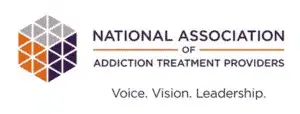Klonopin overdose is a serious medical emergency that requires immediate attention. As one of the most potent benzodiazepines available, Klonopin (clonazepam) carries significant risks when taken in excessive amounts or combined with other substances. Understanding the warning signs, risk factors, and emergency response procedures can literally save lives.
Understanding Klonopin and Overdose Risk
Klonopin, known generically as clonazepam, is a long-acting benzodiazepine medication prescribed primarily for seizure disorders, panic disorder, and certain anxiety conditions. While effective when used as prescribed, Klonopin has a high potential for abuse and dependence, making overdose a serious concern.
What Makes Klonopin Particularly Dangerous
Several factors contribute to Klonopin’s overdose risk:
Extended Half-Life: Klonopin remains active in the body for 18-50 hours, meaning effects can accumulate if doses are taken too frequently.
This Season, Give Yourself the Gift of a Fresh Start.
Whether you are struggling with addiction, mental health or both, our expert team is here to guide you every step of the way. Don’t wait— reach out today to take the first step toward taking control of your life.
High Potency: Klonopin is approximately 20 times more potent than Valium, making it easier to accidentally take too much.
Delayed Onset: Effects may not be immediately apparent, leading some people to take additional doses thinking the medication isn’t working.
Tolerance Development: Regular users often need increasingly higher doses to achieve the same effects, pushing them closer to dangerous levels.
Recognizing Klonopin Overdose Signs
Identifying a Klonopin overdose early can be the difference between life and death. Symptoms can range from mild to severe, and immediate medical attention is crucial for any suspected overdose.
Early Warning Signs
The initial signs of Klonopin overdose typically begin with extreme drowsiness and confusion that goes beyond normal medication effects. Individuals may experience slurred speech, significant coordination problems, and muscle weakness that makes basic movements difficult. Visual disturbances like blurred or double vision often occur, along with nausea and unusual behavioral changes that seem out of character.
Severe Overdose Symptoms
As the overdose progresses, breathing becomes the primary concern. Respiratory depression can develop rapidly, with breathing becoming dangerously slow or shallow. The person’s lips, fingernails, or skin may turn blue (cyanosis), indicating insufficient oxygen. Heart rate typically slows dramatically, and the individual may lose consciousness or become completely unresponsive. Body temperature can drop to dangerous levels, and normal reflexes may disappear entirely.
Life-Threatening Complications
In severe cases, Klonopin overdose can lead to complete respiratory failure where breathing stops entirely. The heart may stop beating effectively, leading to cardiac arrest. Some individuals progress to a deep coma with no response to any stimulation. Without immediate emergency medical intervention, these complications frequently result in death.
Factors That Increase Overdose Risk
Understanding what makes someone more vulnerable to Klonopin overdose can help prevent these dangerous situations.
Substance Combinations
Alcohol represents the most dangerous combination with Klonopin. Both substances depress the central nervous system, and when used together they can cause dramatically increased sedation, severe respiratory depression, coma, and death. Even small amounts of alcohol can create life-threatening interactions with Klonopin.
Opioid Medications create an extremely high risk when combined with Klonopin. Whether prescription pain medications or illegal opioids like heroin, this combination is responsible for thousands of overdose deaths annually due to fatal respiratory depression and unconsciousness.
Other Benzodiazepines can accumulate dangerously when taken with Klonopin. Taking multiple benzodiazepines simultaneously increases the risk of excessive sedation, breathing problems, and accidental overdose with prolonged effects.
Sleep Medications combined with Klonopin can result in dangerous levels of sedation, breathing difficulties, severe memory problems, and increased fall risk that can lead to serious injuries.
Individual Risk Factors
Age plays a significant role in overdose vulnerability. Elderly individuals face much higher overdose risks due to slower metabolism, increased medication sensitivity, higher likelihood of dangerous drug interactions, and greater risk of falls and injuries that can compound the effects of an overdose.
Medical Conditions can dramatically increase overdose vulnerability. Liver disease impairs the body’s ability to process Klonopin, while kidney problems affect drug elimination. Respiratory conditions like asthma or COPD make breathing complications more dangerous, and heart disease increases cardiovascular risks during an overdose.
Tolerance and Dependence create a dangerous cycle where people with Klonopin dependence may take increasingly higher doses, combine the medication with other substances, use unpredictably during withdrawal periods, and have reduced awareness of their personal limits and safety thresholds.
Mental Health Status can significantly impact overdose risk. Individuals with mental health conditions may intentionally take excessive amounts during crisis periods, have impaired judgment about safe dosing, experience dangerous medication interactions, and face higher suicide risk that may involve intentional overdose.
The Lethal Dose: How Much Is Too Much?
While there’s no exact “lethal dose” of Klonopin that applies to everyone, several factors influence toxicity levels:
Dosing Guidelines and Danger Zones
Typical therapeutic doses: 0.25-2 mg daily High therapeutic doses: Up to 4 mg daily (rarely prescribed) Potentially dangerous doses: Above 10-20 mg Likely fatal doses: Variable, but often above 50-100 mg, especially with other substances
Important Considerations
Individual Variation means that factors affecting lethal dose include body weight and composition, current tolerance level, overall health status, genetic factors affecting drug metabolism, and any concurrent medications or substances being used.
No Safe Overdose is an important concept to understand. Even overdoses that don’t result in death can cause permanent brain damage from oxygen deprivation, serious respiratory complications requiring long-term treatment, severe injuries from falls or accidents during impairment, and lasting cognitive effects that impact daily functioning.
Emergency Response: What to Do During an Overdose
Knowing how to respond to a Klonopin overdose can save lives. Every second counts in these situations.
Immediate Actions
- Call Emergency Services: Dial 911 immediately
- Provide clear location information
- State that it’s a suspected benzodiazepine overdose
- Mention any other substances involved
- Stay on the line for instructions
- Assess the Person’s Condition:
- Check for responsiveness by calling their name and gently shaking
- Look for breathing and check pulse
- Note the color of lips and fingernails
- Document any symptoms you observe
- Position for Safety:
- If conscious but drowsy, keep them sitting up
- If unconscious, place in recovery position (on their side)
- Clear airway of any vomit or obstructions
- Do not leave them alone
- Monitor Breathing:
- Watch chest movements
- Listen for breathing sounds
- Be prepared to perform rescue breathing if needed
- Note any changes in breathing pattern
What NOT to Do
Never attempt to make the person vomit, as this can cause choking or aspiration. Don’t give them coffee or other stimulants, which can worsen the situation. Avoid putting them in a bathtub or shower, as they could drown. Never leave them alone to “sleep it off,” as their condition can deteriorate rapidly. Don’t give them any other medications unless specifically instructed by emergency medical personnel.
Information for Emergency Responders
When help arrives, provide them with crucial information including what substance was taken and approximately how much if this information is known. Tell them when the substance was consumed and describe any other drugs or alcohol that may have been involved. Share the person’s medical history and current medications, and explain any changes you’ve observed in their condition since discovering the overdose.
Medical Treatment for Klonopin Overdose
Professional medical treatment for Klonopin overdose involves several approaches depending on the severity and circumstances.
Emergency Department Interventions
Immediate Assessment:
- Vital signs monitoring (heart rate, blood pressure, breathing, temperature)
- Blood tests to confirm substance levels
- Neurological examination
- Cardiac monitoring
Supportive Care:
- Airway management: Ensuring breathing is adequate
- IV fluids: Maintaining hydration and blood pressure
- Oxygen therapy: Supporting respiratory function
- Temperature regulation: Treating hypothermia if present
Antidote Administration: Flumazenil may be used in specific circumstances:
- Reverses benzodiazepine effects
- Must be used carefully due to seizure risk
- Not appropriate for all patients
- Requires careful monitoring
Complications and Treatment
Respiratory Depression:
- Mechanical ventilation may be necessary
- Continuous oxygen monitoring
- Potential ICU admission
Cardiovascular Issues:
- Heart rhythm monitoring
- Blood pressure support
- Cardiac medications if needed
Neurological Effects:
- Continuous consciousness assessment
- Seizure precautions (especially if flumazenil is used)
- Brain imaging if indicated
Recovery and Aftercare Following Overdose
Surviving a Klonopin overdose is often a wake-up call that indicates serious problems with substance use that require professional intervention.
Immediate Post-Overdose Period
Medical Monitoring: Even after initial stabilization, patients may need:
- Extended observation periods
- Neurological assessments
- Respiratory monitoring
- Psychological evaluation
Safety Planning: Before discharge, healthcare providers should:
- Assess suicide risk
- Remove access to dangerous amounts of medication
- Arrange follow-up care
- Provide crisis resources
The Need for Addiction Treatment
A Klonopin overdose often indicates:
- Tolerance and dependence: Needing higher doses for effects
- Loss of control: Inability to manage medication use safely
- High-risk behaviors: Combining substances or taking excessive amounts
- Underlying issues: Mental health problems or addiction
Treatment Options at The Recovery Village Palmer Lake
Following an overdose, comprehensive treatment is essential for preventing future incidents. Our programs include:
- Safe, supervised withdrawal management
- 24/7 medical monitoring
- Gradual tapering protocols
- Comfort medications for withdrawal symptoms
- Residential treatment in a secure environment
- Individual and group therapy
- Mental health treatment for co-occurring disorders
- Life skills and coping strategy development
Specialized Benzodiazepine Treatment:
- Understanding of complex withdrawal processes
- Dual diagnosis treatment for anxiety and addiction
- Long-term recovery planning
- Family education and support
Preventing Future Overdoses
Prevention is always better than emergency treatment. Several strategies can help prevent Klonopin overdoses.
Safe Medication Practices
Follow Prescriber Instructions:
- Take only as prescribed
- Never adjust doses without medical guidance
- Don’t skip doses and then double up
- Use pill organizers to track doses
Avoid Dangerous Combinations:
- Never mix with alcohol
- Inform all healthcare providers about Klonopin use
- Check for drug interactions with new medications
- Be cautious with over-the-counter medications
Secure Storage:
- Keep medications in original containers
- Store in a secure location away from others
- Never share prescription medications
- Properly dispose of unused pills
Recognizing Warning Signs
Tolerance Development:
- Needing higher doses for the same effect
- Effects wearing off more quickly
- Taking extra doses between prescribed times
Dependence Indicators:
- Anxiety when doses are delayed
- Difficulty functioning without medication
- Withdrawal symptoms between doses
- Preoccupation with next dose
Risk Behaviors:
- Getting prescriptions from multiple doctors
- Buying pills from others
- Using with alcohol or other drugs
- Taking more than prescribed regularly
The Role of Family and Friends
Loved ones play a crucial role in preventing overdoses and supporting recovery.
Education and Awareness
Learn the Signs: Family members should know:
- What overdose symptoms look like
- How to respond in an emergency
- When to call for help
- Basic first aid procedures
Understand the Risks: Recognize that:
- Prescription doesn’t mean safe
- Tolerance increases overdose risk
- Combining substances is extremely dangerous
- Mental health issues increase risk
Creating a Supportive Environment
Remove Temptations:
- Secure or remove excess medications
- Eliminate alcohol from the home
- Create a drug-free environment
- Monitor prescription refills
Encourage Treatment:
- Express concern without judgment
- Research treatment options
- Offer to help with logistics
- Participate in family therapy
Crisis Planning:
- Know emergency numbers
- Have a plan for overdose situations
- Keep naloxone (Narcan) available if opioids are also involved
- Know the location of nearest emergency room
Insurance Coverage and Treatment Access
Many people worry about the cost of overdose treatment and subsequent addiction care. Important points about coverage include:
Emergency Treatment
- Emergency overdose treatment is typically covered by insurance
- Emergency rooms cannot turn away patients regardless of ability to pay
- Stabilization and immediate care are considered essential services
Addiction Treatment
Insurance often covers addiction treatment under mental health parity laws:
- Medical detox services
- Inpatient rehabilitation
- Outpatient treatment programs
- Mental health counseling
Our admissions team can help:
- Verify insurance benefits
- Explain coverage details
- Arrange pre-authorization when needed
- Discuss payment options for uncovered services
Long-Term Recovery and Relapse Prevention
Surviving an overdose is just the beginning of the recovery journey. Long-term success requires ongoing support and lifestyle changes.
Building a Strong Recovery Foundation
Professional Support:
- Regular therapy sessions
- Psychiatric medication management
- Support group participation
- Case management services
Lifestyle Modifications:
- Stress management techniques
- Healthy sleep habits
- Regular exercise routines
- Nutritional support
Social Support Systems:
- Family involvement in recovery
- Peer support networks
- Sober living environments
- Community resources
Addressing Underlying Issues
Mental Health Treatment: Many people who overdose on Klonopin also struggle with:
- Anxiety disorders
- Depression
- Trauma-related conditions
- Other mental health issues
Dual Diagnosis Care: Integrated treatment addressing both addiction and mental health conditions is often necessary for long-term success.
The Importance of Professional Help
A Klonopin overdose is a clear indication that professional intervention is needed. Attempting to manage benzodiazepine dependence alone is dangerous and often unsuccessful.
Why Professional Treatment Matters
Safety: Medical supervision prevents dangerous withdrawal complications Effectiveness: Evidence-based treatments improve success rates Support: Professional teams address all aspects of recovery Resources: Access to medications, therapies, and support services
Getting Started
If you or someone you love has experienced a Klonopin overdose or is at risk:
- Don’t wait for another crisis
- Reach out for professional help immediately
- Consider residential treatment for intensive support
- Involve family members in the treatment process
Conclusion: Hope and Healing After Overdose
A Klonopin overdose can be a terrifying experience, but it can also be a catalyst for positive change. Many people use the wake-up call of an overdose to seek help and build a life free from dangerous substance use.
Recovery from benzodiazepine dependence is challenging but absolutely possible with proper support and treatment. The Recovery Village Palmer Lake has helped countless individuals overcome Klonopin dependence and build meaningful, fulfilling lives in recovery.
Remember:
- Overdose is preventable with proper education and precautions
- Emergency treatment saves lives when overdose occurs
- Recovery is possible with comprehensive treatment and support
- You’re not alone in this journey
If you’re struggling with Klonopin use or have experienced an overdose, don’t wait for another crisis. Reach out for help today. Your life is valuable, and recovery is within reach with the right support and treatment.
The path to healing begins with a single step. Take that step today by reaching out for professional help. Your future self will thank you for having the courage to ask for support when you needed it most.









